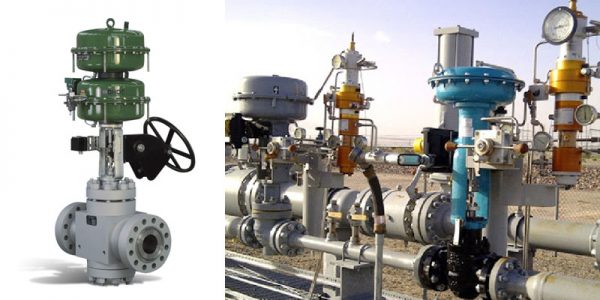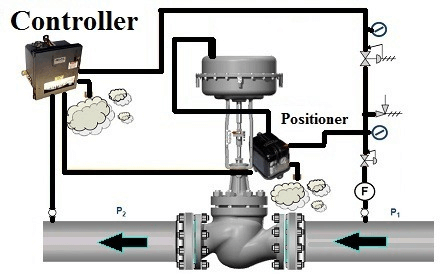Recognizing the Significance of Control Valves in Process Automation
Recognizing the Significance of Control Valves in Process Automation
Blog Article
Achieve Seamless Combination and Control With High Quality Structure Automation Controls
In the world of contemporary structure monitoring, the significance of quality building automation controls can not be overstated. As technology proceeds to advancement, the combination and control of numerous systems within a building have actually advanced to be much more innovative and effective. The smooth procedure and surveillance of lights, A/C, safety and security, and other structure functions have come to be vital for improving occupant comfort, power effectiveness, and general operational performance. The trip in the direction of attaining real integration and control is a multifaceted one, with considerations ranging from system compatibility to cybersecurity. Accepting high quality building automation controls is not just a matter of ease yet a strategic critical for companies aiming to maximize their centers' efficiency and sustainability.

Advancement of Building Automation Controls
Throughout the past couple of decades, the advancement of developing automation controls has dramatically transformed the way buildings are taken care of and run. Initially, building automation systems mostly concentrated on fundamental functions such as regulating air flow, air, and home heating conditioning (A/C) systems. As modern technology advanced, these controls have actually ended up being much more advanced, permitting for a bigger array of building systems to be incorporated and managed centrally.
The advancement of building automation controls has actually seen a shift towards even more intelligent systems that can adapt to changing problems in real-time. This versatility is essential for maximizing energy effectiveness and guaranteeing owner convenience. Furthermore, contemporary building automation controls now use functions such as predictive maintenance, remote tracking, and information analytics, making it possible for facility supervisors to make data-driven decisions to enhance structure efficiency.

Advantages of Quality Assimilation
The improvement in building automation regulates towards more smart systems has emphasized the significant benefits of quality combination in maximizing building procedures and enhancing general performance. This centralized control additionally supplies far better visibility and insights into building performance, enabling proactive maintenance and optimization methods. On the whole, the benefits of top quality combination in building automation controls are obvious, using boosted performance, comfort, and functional performance.
Improved Customer Experience and Access
Enhancing user interaction with structure automation controls with intuitive style and boosted access elevates the general experience for owners and facility supervisors alike. By concentrating on customer experience, building automation systems can end up being much more easy to use and effective. Intuitive interfaces, clear navigation, and personalized settings empower users to interact with the controls easily and effectively.
Accessibility attributes play a vital role in making sure that all individuals, consisting of those with specials needs, can utilize the building automation regulates easily. Including features such as voice commands, tactile switches, and color-contrasted screens can enhance availability and make the controls a lot more comprehensive.
Furthermore, improved customer experience causes greater user contentment, increased efficiency, and better decision-making. Owners can adjust environmental settings according to their choices, while facility supervisors can effectively take care of and keep track of building systems - control valves. Generally, focusing on individual experience and accessibility in structure automation controls contributes to an extra efficient and seamless building environment for all stakeholders involved
Sustainable Practices Via Automation

Furthermore, automation can help with the integration of renewable resource sources such as photovoltaic panels or wind turbines into structure procedures. By instantly readjusting energy use based on the accessibility of renewable resource, buildings can additionally reduce their reliance on non-renewable resources. This seamless combination of lasting practices not just profits the atmosphere however additionally improves the overall operational effectiveness and cost-effectiveness of the structure. Through automation, structures can straighten with contemporary sustainability goals and add to a greener future.
Future Trends in Building Control Systems
One prominent trend forming the future of structure control systems is the increased assimilation of Artificial Knowledge (AI) and device learning. Furthermore, the Net of Things (IoT) is changing building control systems by linking devices and sensors to improve procedures and improve effectiveness.
An additional key trend is the focus on cybersecurity measures to protect versus potential hazards to constructing automation systems. As buildings become much more interconnected, ensuring durable cybersecurity procedures will certainly be necessary to protect delicate information and stop unauthorized access.
Additionally, the shift towards cloud-based systems is acquiring energy, enabling centralized control and remote access to building systems. This facilitates much easier monitoring, maintenance, and updates, enhancing the overall efficiency and adaptability of building control systems. As innovation continues to advancement, these trends are anticipated to form the future landscape of structure automation controls, driving innovation and sustainability in the constructed setting.
Final Thought
Future trends in structure control systems are most likely to concentrate on additional improving automation capabilities for enhanced energy performance and overall efficiency. It is important for building proprietors and drivers to prioritize the adoption of quality structure automation controls to enhance structure operations and accomplish long-lasting sustainability objectives.
In the world of modern-day structure monitoring, the value of top quality building automation controls can not be overemphasized. Overall, the advancement of structure automation controls proceeds go to my site to drive technology in the building management sector, using brand-new opportunities for producing smarter and more sustainable buildings.
The development in structure automation manages towards more intelligent systems has actually highlighted the considerable advantages of top quality integration in maximizing building operations and boosting total efficiency. On the whole, prioritizing user experience and accessibility in structure automation controls contributes to an extra seamless and effective building atmosphere for all stakeholders entailed.
It is crucial for structure proprietors and operators to focus on the adoption of top quality structure automation regulates to optimize building procedures and achieve long-lasting sustainability goals. - control valves
Report this page